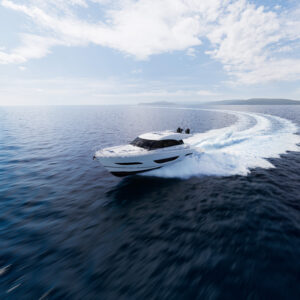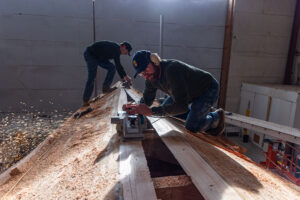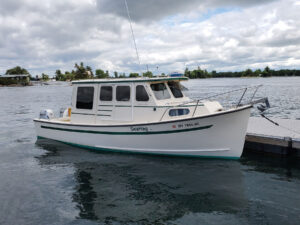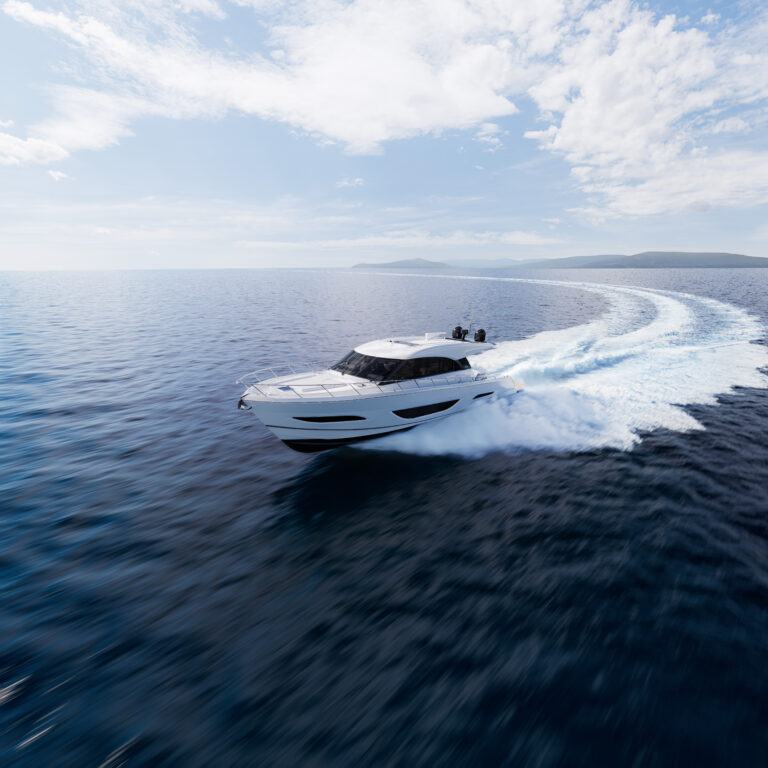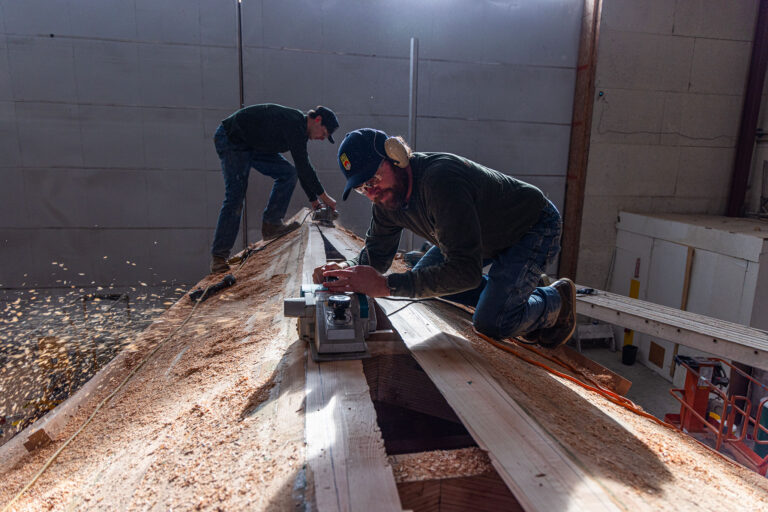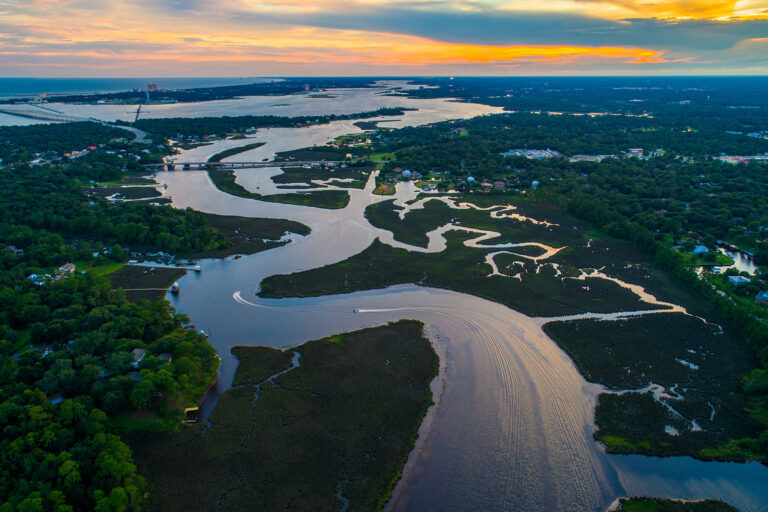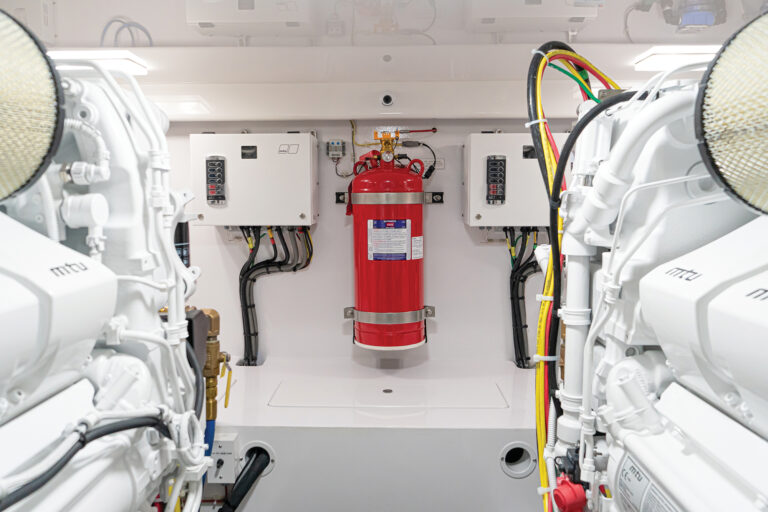The voyage of David de Rothschild’s plastic bottle catamaran could prove useful to boatbuilders
Sailing across an ocean is not a big deal these days. Kids do it, grandmothers do it and just about everyone in between does it. But if you do it on Plastiki, a catamaran that’s partially constructed from 12,500 recycled plastic bottles and if you are David de Rothschild, that’s a whole different matter.
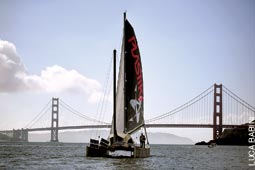
He might be the heir to the vast fortune of the Rothschild banking dynasty, but he’s better known for his adventurous exploits. He’s the youngest Brit to have conquered both geographic poles and he crossed the ice cap of Greenland in record time. He was recognized by National Geographic and the World Economic Forum. The United Nations Environmental Program labeled him a “Climate Hero.” And now he tackles waste.
Through his company, Adventure Ecology, de Rothschild organized the Plastiki expedition, which was inspired by Thor Heyerdahl’s journey on Kon-Tiki, the raft Heyerdahl built from biodegradable material and sailed from South America to Polynesia in 1947. De Rothschild wants to sail from San Francisco to Sydney, Australia, to raise awareness about the mountain of plastic that is sloshing around in the Great Pacific Garbage Patch. That’s the part about the ecology. But there’s also a lot of innovation involved in Plastiki, which might touch the way we build and use boats.
Problem to solution
The garbage patch is a vast and boring stretch of ocean between California and Hawaii, estimated to be twice the size of Texas with circular currents that are sucking in millions of tons of floating plastic trash from all points of the compass. There it breaks down into little pieces that kill birds, fish and mammals that ingest it. Scientists say these particles can also be toxic and they get introduced into the food chain, which means that plastic can come right back to haunt humans. So for all its practicality, plastic also is an environmental time bomb. And if sailors are not in utter denial, they recognize that fiberglass composite is hard to recycle and has few applications thereafter. But Rothschild says there’s a way out and that starts at the cradle, meaning with materials and construction. “There’s no denying that plastic is very useful [therefore] it must become part of the solution,” he told me during the construction phase of his boat. “We want to show that plastic can be smart, so it becomes a resource not just trash. If you can make a boat from recycled plastic bottles, the material becomes valuable. But that requires a new approach.”
Get smart, get PET
Looking at the drab catamaran with its raked-aft ketch rig bobbing at anchor near the Golden Gate Bridge on a blustery day, the boat appears crude to the untrained eye. But the true values are in and under the skin. The flotation comes from the reclaimed PET bottles, which all of us have in the fridge or on the shelf with household cleaning products. PET (polyethylene terephthalate) is a plastic resin and a relative of polyester, which is the stuff from which most boats are made. These PET bottles were filled with dry ice and capped, so they were pressurized to become rigid. That way they got a second lease on life. And when Plastiki is headed for the scrap heap, they could be re-, up-, or downcycled into another application, like fleece jackets or feeding troughs on a pig farm. Plastiki’s structural parts are made of self-reinforcing PET (srPET), which is not reclaimed, but which also lends itself to recycling afterward. The caveat – and the reason the trip had to be postponed for 10 months – is that nobody has built a boat from these materials before, so new processes had to be developed. In some applications the builders even used an eco-glue made from cane sugar and cashew nuts. “We had to develop new molding techniques that involve temperatures of up to 200 degrees C [about 400 degrees F] and use extremely high pressure,” explains Greg Pronko from Smarter Planet, a company involved in the process. These methods are foreign to traditional boatbuilding, but they are used in snow- and surfboard construction. Plastiki’s structural parts use layers of drawn PET fibers instead of conventional glass mats or roving. “We wanted to be 100 percent recyclable,” Pronko adds. For that very reason Plastiki uses reclaimed aluminum irrigation pipes for her masts and laminate sails that are made in part from post-consumer recycled PET. Other sustainable details include zero-emission electricity generation from wind, solar and bicycle generators, rainwater catchment, a tiny on-board veggie garden and a composting head. For maneuvering purposes the boat is fitted with a 60-hp diesel outboard – so not quite zero-emission.
Compromises for the cause
For all these qualities, Plastiki is not a stiff boat. Far from it: PET flexes. This has an influence on the boat’s design, which had to avoid high loads. “We have no appendages and we have a soft rig on two separate forestays,” notes co-skipper David Thomson, who cut his teeth as crew on Steve Fossett’s record-setting mega-cat Playstation. Flying an asymmetrical spinnaker off the windward bow, he estimates Plastiki can do 8 knots on a beam reach. The goal is to cover the trip from San Francisco to Sydney (great circle distance about 6,450 nautical miles) in three to four months with two stopovers, possibly in the Christmas Islands and Tuvalu. Thomson hopes for 100 miles per day on average, perhaps more. What if they have to sail to weather? “Ah, we’ll have to run with it,” Thomson says with a laugh. Or deploy a sea anchor and ride it out. “Captain Cook did not sail upwind and got around quite well,” says Plastiki’s Australian designer Andrew Dovell. He calls Plastiki a “stout boat” and claims the prototype managed 10 knots of boat speed in 20 knots of wind. The greatest surprise, though, was the yield strength of the material, he says. “Fiberglass and carbon fiber are very stiff, but they break without warning, while srPET has much more tolerance. Even if you damage it, it won’t break,” Dovell explains. “The marine industry is incredibly polluting and produces too much waste,” he says, adding that he’s convinced that some day PET might find its way into boat construction. “You need fancy tooling, which is expensive, so you need large production runs.” Dovell thinks it could become an alternative to polyethylene, a popular material for small dinghies and kayaks. “Regardless of Plastiki’s voyage, I think we already have achieved some success in planting the seed for this new material.”
Plastiki planned to leave San Francisco mid-March, weather permitting. As of March 7, Plastiki had made its first sail in open seas, sailing out past the Golden Gate Bridge and back in a test deemed a success.
The crew size was not determined, but early indications were four sailors and a camera team that documents the trip for posterity sharing the cramped quarters inside the crew pod on Plastiki’s deck. Follow the adventure on www.theplastiki.com.
Dieter Loibner is Soundings sailing editor and the author of the book Sustainable Sailing, www.sustainablesailingbook.com
This article originally appeared in the Home Waters Sections of the May 2010 issue.


